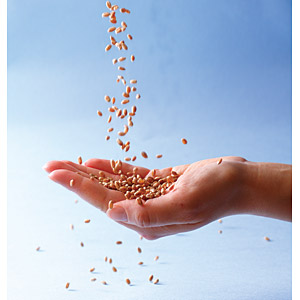 Adding fiber to grain products and snacks has become quite popular, as fiber is severely under-consumed throughout the world. The U.S. recommendation for fiber consumption is 14 g. per 1,000 calories or 28 g. for the average person on a 2,000 calorie per day diet (25 g. for women; 38 g. for men). The requirement is based on the amount of fiber thought to be necessary to lower cardiovascular disease risk.
Adding fiber to grain products and snacks has become quite popular, as fiber is severely under-consumed throughout the world. The U.S. recommendation for fiber consumption is 14 g. per 1,000 calories or 28 g. for the average person on a 2,000 calorie per day diet (25 g. for women; 38 g. for men). The requirement is based on the amount of fiber thought to be necessary to lower cardiovascular disease risk.
The current estimate for U.S. fiber consumption is about 15 g. a day, so most of the population gets only one-third to one-half of the recommended amount of fiber. Less than 5% of the U.S. population over the age of 2 years meets the fiber requirement. While enriched grains are not the best source of fiber—because they are consumed in such quantity—they do make a substantial contribution to fiber intake in the U.S.
Most of the fiber in cereal grains is found in the bran, which is why whole-wheat bread contains four times as much fiber as white bread. Since fiber levels vary greatly among grains, not all whole grains are good sources of fiber. Unfortunately, consumers and many folks in the nutrition and medical world continue to equate fiber with whole grains. This increases confusion for consumers as to the two separate recommendations and health benefits.
Not all cereals and fibers have the same health benefits. Insoluble fibers are mostly associated with increasing laxation and improving gut health, whereas viscous fibers are better known for their association with heart health and controlling blood glucose. Beta-glucans from oats and barley is the most effective for lowering cholesterol, and there is a U.S.-authorized health claim for beta-glucans for reducing heart disease.
Some fiber components found in wheat, corn, millet, rice, barley and oats have been shown to improve glucose tolerances, which can lead to preventing insulin resistance and diabetes. Inulin, a soluble fiber from plant-based foods such as fruits, vegetables, whole grains and legumes, improves the environment in the colon and acts as a prebiotic, meaning a nondigestible dietary supplement or one in the form of nondigestible carbohydrate that favors the growth of desirable microflora in the large bowel. Large studies have also linked fiber to lower rates of colon cancer and diverticular disease. Fiber is recommended to both prevent and treat diverticular disease.
Fiber, phytate and bran can all impair mineral absorption, although in diets replete with minerals from many sources, the nutritional impact of phytate has been shown to be minimal. In certain parts of the world, plant-based diets based on grains high in phytates, such as sorghum and millet, need safeguards to ensure sufficient minerals in the diet.
Fiber amounts vary among cereals from 1.2% (brown rice) to 13% (barley) and by varieties and growing seasons. Because of this variability, people are advised to eat a wide variety of cereal types to reap the health benefits of each.
Opportunities and obstacles
Opportunities for fortifying products with fiber abound because, unfortunately, it’s difficult to consume enough fiber through natural food sources without going over caloric recommendations. There is controversy about whether added fibers offer the same nutritional benefits of natural-occurring fibers. However, there are many proven benefits of adding isolated fibers. Inulin can improve gut health, may increase satiety and may help improve calcium and magnesium absorption. Beta-glucans—the fiber from oats that decreases blood glucose and cholesterol—is more concentrated in its isolated form and, therefore, more potent than straight oatmeal.
For some people, increased fiber causes digestive distress and can result in bloating and flatulence. The most popular remedy is to increase fiber gradually, so the digestive system can adjust. Studies of vegetarians show that regular ingestion of more than 80 g. of dietary fiber per day causes no digestive problems.
Little data exists for high dietary fiber intakes for children and the elderly. There is concern that very high fiber diets for very young children may make it difficult for them to eat enough volume of food for adequate growth. Therefore, adding extra fiber in products marketed to children should be thoroughly researched.




